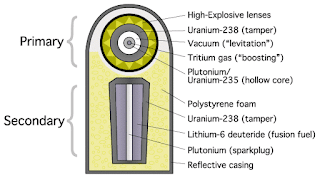Chapter 1: Late Arrival
He came home too late; they’d already been through, looting as they went.
His very home was pillaged, wrecked, and broken.
Seeing the blood on the walls, he knew they’d slaughtered his family; when he found his wife and children, their bodies cut and busted, and their heads spiked to the wall, he fell on his knees in the shards of pottery, and didn’t feel the cuts.
He went hot and cold, saw red and black, and fell forward.
When the two men who’d stayed behind to watch for him finally entered the remains of his home, he never felt the shackles and blindfold they put on him, before the larger man slung him like an empty sack over his shoulder, and carried him away.
***************
It was dark when he woke up, and his eyes took a moment to adjust until he could finally see at the very least the outlines of things.
The sun was setting, and the cell they put him in was full of lengthening shadows and strengthening wind.
His mouth was dry, and his clothes were too thin for the cold, and the place reeked of waste.
When he tried to sit up, pain smacked his forehead and sent him rolling onto his side, moaning and wincing.
“So you’re alive.”
The raspy voice, coming from a dark corner of the cell, startled him, and despite his brain pounding against his skull, he scrabbled like a crab to the opposite corner.
The raspy voice gave a raspy laugh.
“Who are you?” the new prisoner said.
“One who was, and is no more, as you will be soon.”
“Where am I?”
“In the land of great kings, and now, you are underneath the ground, soon to be a part of it.”
“Why are you talking nonsense? Is now the time for riddles?”
The face that belonged to the raspy voice slowly emerged and fixed itself in the last ray of sunlight. It was scarred and lumpy, misshapen to the point where it was barely human, and its eyes were filmy with opalescent mucus that glinted in the dying light.
Its smile, even with missing teeth, was feral, and the overall impression was one of insanity.
The new prisoner flinched at the grim visage.
“That’s where you’re wrong, friend. Look around you; time is all we have, and even that is running out.”
“Please, please tell me what is this place?”
“The land is called Raama, a city in the midst of deserts on one side, and jungles on the other. Its ruler is named Kahi, a woman who believes herself a goddess, and every ten years, she picks a village, slaughters its women and children for their blood as a preserving sacrifice, and imprisons and enslaves its men, burning them in high pyres when they can no longer be of any service, according to her whim.”
“And yet you are here, rotting in this cell along with me, and speaking in riddles.”
Again, the raspy laugh.
“I am her brother. I tried to stop her; when I couldn’t do it with reason, I tried to do it with steel, but her power over men is great, and they captured me. They beat me for hours, tortured me for days, and finally threw me in here, to be forgotten and die.”
The new prisoner took that in, saying nothing at first, but then the sun was gone, and the man’s face still haunted him, though now it was back in darkness, invisible to the eye, but he still wasn’t sure the man wouldn’t attack him, and he was afraid, so he said something else to keep her brother talking, so he would know where he was.
“What should I call you?”
“Call me spirit, for soon I will no longer be flesh.”
More riddles; actually, a rephrased repetition of an earlier one; he was better off not talking, but he had to know, since his family was dead.
“This…ritual…of your sister’s, does it work?”
The raspy laugh ended in a coughing fit, then a long silence.
The new prisoner, resigned to his fate, leaned back against the cold stone, and closed his eyes, thinking he would get no answer, when it came out of the utter blackness.
“When you see her, you tell me.”
Chapter 2: A Meeting of Minds
For days, they languished, catching what vermin they could between the barely edible meals and tepid water.
Whole days passed in silence, sleep, and more silence.
The new prisoner, no longer new, began to lose weight and weaken.
Kahi’s brother was somehow holding on; the swelling on his face was down, and his voice was stronger, but still husky.
To count the days, he broke pieces of dirty straw and stuffed them in a crevice that let in air between the stones.
“What purpose does that serve?” Spirit asked.
“It gives me hope.”
The well-worn laugh raspy laugh followed that, though the man who was doing it still kept to the shadows, even during the day, as if he could no longer tolerate even the shades of light that warmed his seemingly sightless eyes.
The new prisoner wondered if he was in fact blind already, or going blind; he’d pushed his face into the last patch of light as if he were a traveling player hitting his mark. He would’ve asked, but the thought of Spirit being able to see him anyway while blind would’ve disturbed him more.
He chuckled inwardly at his flight of fancy, and dismissed it; there were bigger things at stake.
“You said I would see her.”
“She knows you are here, and she is in no hurry. After you do, you may wish that you had not, so don’t be too eager, my friend.”
“You believe she has powers?”
“She does.”
“But you believe she’s mad.”
“I believe her ‘ritual,’ as you so delicately phrased it, has made her so.”
“Before she sends for me, tell me what happened between you.”
Spirit, little more than a brighter shadow I spite of the late afternoon sun shining through the thick bars in the lone window, shifted like a lump of coal settling into the flames to burn.
More silence ensued as the shadows lengthened.
A guard brought the jug of tepid water they used for drinking and whatever else, though nothing seemed to get rid of the smells.
The prisoner waited; sometimes Spirit answered, sometimes he didn’t.
“You won’t be able to stop her.”
“Just because you couldn’t, doesn’t mean it can’t be done.”
“If you would go to your death so willfully, so foolishly, your blood will not be on my hands.
“Absolve me of the curse of spirit blood, and I will tell my tale.”
“If I die, my blood will not be on your hands, and my eternal spirit shall leave you in peace.”
“Pass me the jug.”
The prisoner passed it, and Spirit drank, but didn’t put the jug to his lips; neither of them did, for their faces were foul and rank as well as their bodies, and the water, though tepid, was at least clean.
Spirit sighed and shifted again as the prisoner set the jug aside.
“It may be, my friend, that you will succeed where I’ve failed, but her power’s increased, as well as the men at her beck and call; getting close to her will be harder.
“Even so, listen carefully; you may see a weakness where I saw none.
*********************
I was on a voyage to secure a trade route, and deal treacherously with the ruler of an island nation along the way that had harried both our ships, demanding tribute from a share of the profits since we sailed in his waters.
Kahi begged to go, since she hardly got away from the palace grounds, and I relented, deciding to enjoy her company, since we seldom saw each other within its walls.
As it turns out, it was I who secured the trade route, and Kahi who dealt with the island chief.
I left them alone to ‘negotiate,’ so to speak; it was no contest, and he was no match for her.
She cut him open at the moment of his release, blood splattered, and she got some, she told me later, on her lips.
Next to his bed was a golden chalice, a gift from the other ruler with whom we traded, and whether or not it was full, or what it was full of, I can’t say, but when I came into the room, she’d placed it to her lips, and some of it ran from the corner of her mouth.
Seeing me, she looked right at me, lowered the chalice, licked off the blood on her lips, and put her finger in it, stirring it, her stare gathering a dark power I felt like heat shimmering on my skin, as if I were a sunning reptile.
She put the finger to her lips in a ‘be quiet’ gesture.
I could see the island chief’s spirit raging at her, gesturing, but whether or not she heard him, or cared if she did, she gave no outward sign that he was there.
. It tried, vainly, to re-enter its body, but she’d butchered it beyond healing.
I backed out of the room, and it seemed her stare now had heaviness to it; she was hypnotizing me, and shaking my head to break her gaze, I turned and quickly hurried to the ship to make ready for the journey home.
But I was too overwhelmed by what I’d seen, and the first mate, seeing I wasn’t well, told me to go below; he would see us safely off for home.
Grateful, I went below, and Kahi, going into her own cabin, turned and smiled before she closed the door.
I locked mine, and put a weighted trunk in front of it.
From the other side of the wall, I could hear her soft laughter, and I knew it was at my expense.
When we got back, we never spoke of what happened.
A month later, she raided her first village.
**************
“Your family?”
“She’s all I have.”
“No heirs.”
“No. The succession fell to me, but she usurped me with the help of those she enthralled.”
“The surrounding villages, any allies?”
“They’ve heard whispers and rumors, but none has come to see, much less help; her…purges…are thorough.”
“So no survivors, no avenging families.”
“None.”
“Then before we get much weaker, we have to stop her.”
“And how do we do that from here?”
“When she sends for me, I will act.”
“You speak of killing?”
“From what you say, is there another choice?”
“I told you, she’s my only family.”
Seems he forgot he told the prisoner he also tried to kill her.
The prisoner sat back, and made a sweeping gesture with his arm.
“That’s where you’re wrong, friend. Look around you.”




